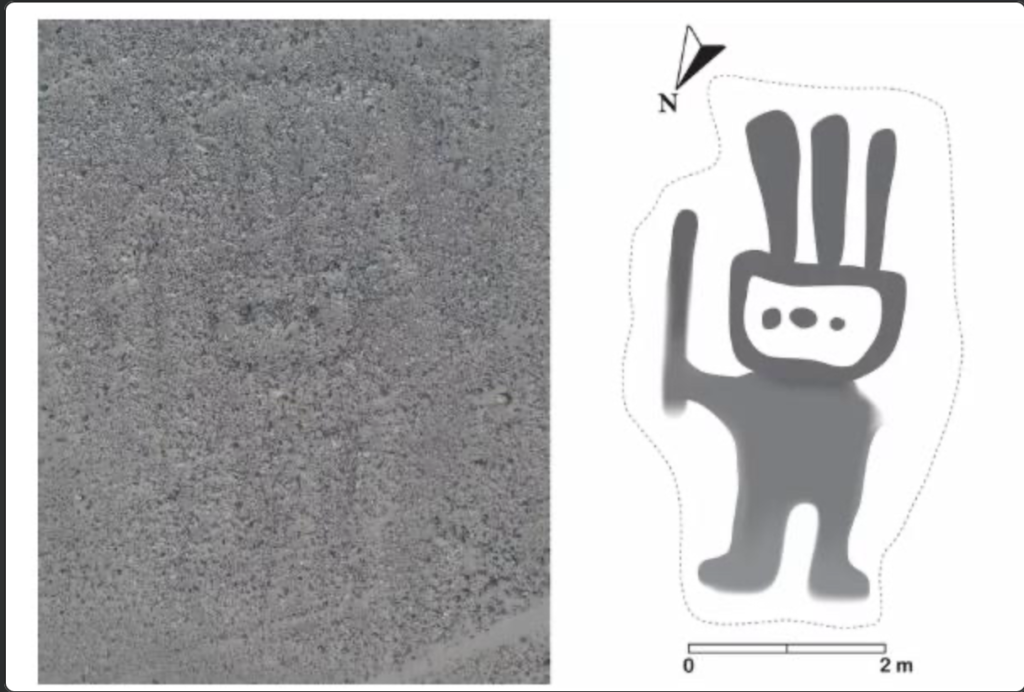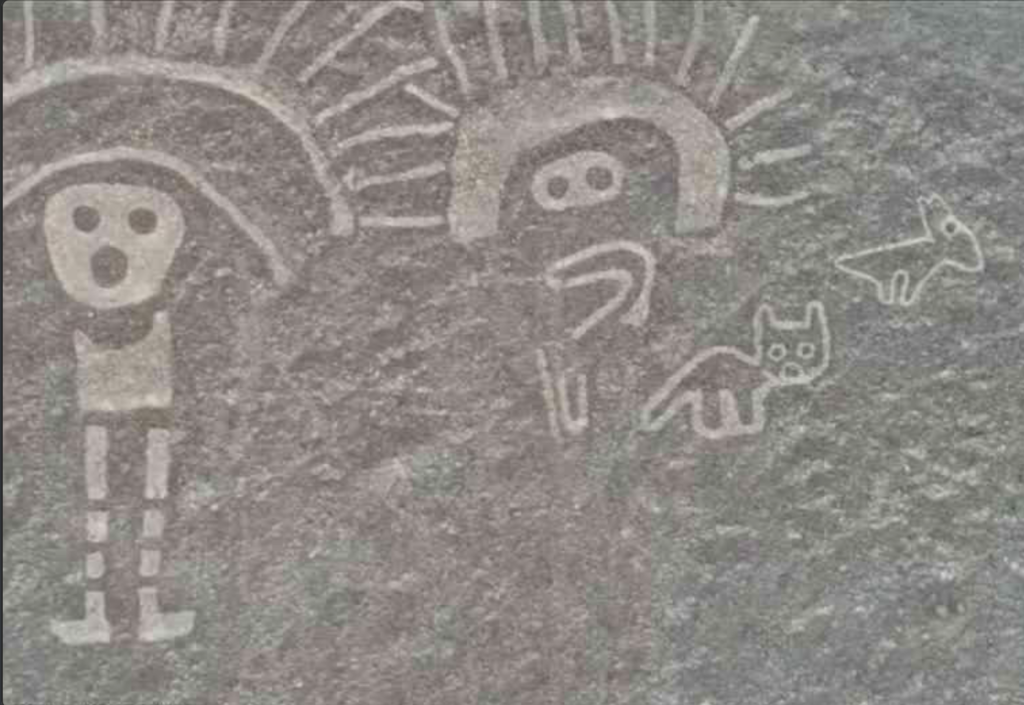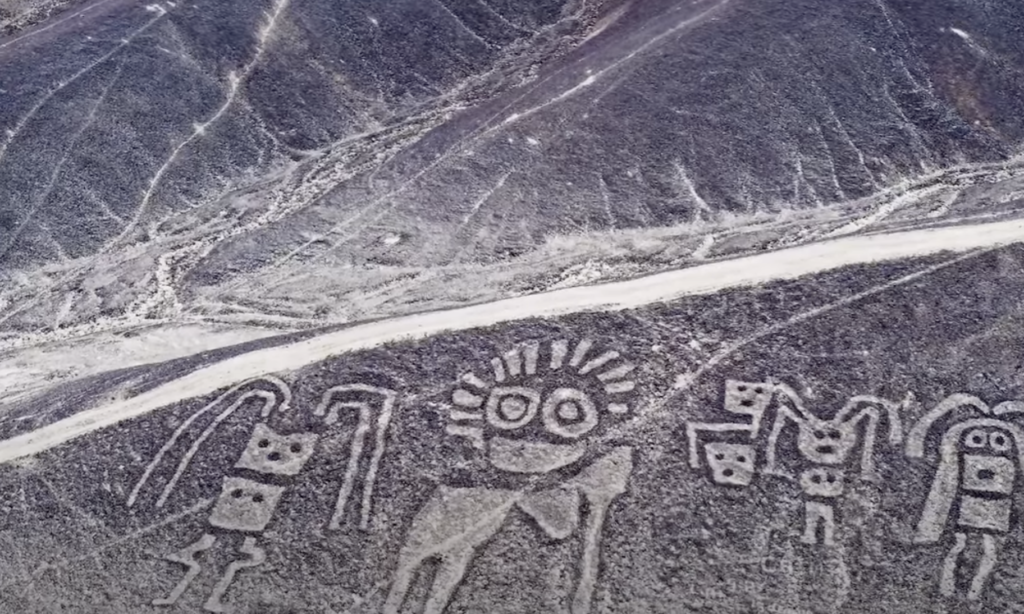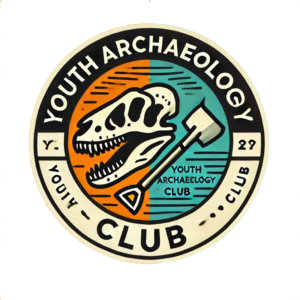Recent advancements in archaeological research have led to the discovery of new geoglyphs in Peru’s Nazca Desert, some of which intriguingly resemble humanoid figures. These findings have sparked discussions about their origins and purposes, with some speculating about ancient astronaut theories.
Key Discoveries:
• Humanoid Figures: Among the newly identified geoglyphs, several depict humanoid shapes. Notably, one figure appears to be holding a staff or stick, though its exact significance remains uncertain.
• Diverse Imagery: In addition to humanoid forms, other geoglyphs represent animals such as birds, orcas, cats, and snakes. Some designs are abstract, while others are more intricate. 

Technological Advancements in Research:
The integration of artificial intelligence (AI) has significantly enhanced the efficiency of these discoveries. Researchers utilized AI to analyze aerial photographs, leading to the identification of subtle geoglyphs that might have been overlooked using traditional methods. This approach enabled the detection of numerous geoglyphs within a six-month field survey.
Cultural and Historical Significance:

The Nazca Lines, including these newly discovered geoglyphs, are believed to date back approximately 2,000 years, between 100 BCE and 300 CE. Their exact purpose remains a subject of debate among scholars, with theories ranging from astronomical markers to religious or ceremonial functions. The discovery of humanoid figures adds a new dimension to these discussions, prompting further research into their cultural and symbolic meanings.
Speculations and Interpretations:

The humanoid shapes have led to various interpretations, including speculations about ancient astronaut theories. However, mainstream archaeology tends to focus on understanding these figures within the context of the Nazca culture’s artistic and ceremonial practices.
In summary, the recent discovery of geoglyphs resembling humanoid figures in the Nazca Desert offers fresh insights into the region’s archaeological and cultural heritage. While some interpretations venture into the realm of ancient astronaut theories, ongoing research aims to uncover the true significance of these enigmatic designs within the ancient Nazca civilization.

